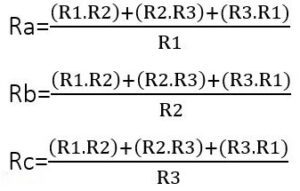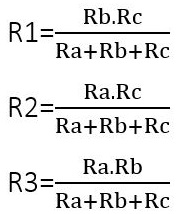This convertor allows engineers and students to determine the physical dimensions of a rectangular microstrip patch antenna based on the resonant frequency, substrate height, and dielectric constant. It is useful for RF design and antenna prototyping.
Uses of the Microstrip Patch Antenna Convertor
1. Quickly estimate patch width and length for a given substrate and frequency.
2. Assist in PCB antenna design without manual calculations.
3. Facilitate learning and experimentation with RF antenna properties.

Conversion Formula
Width: W = (c / (2 × f₀)) × √(2 / (εr + 1))
Effective Dielectric Constant: ε_eff = (εr + 1)/2 + ((εr – 1)/2) × (1 + 12h/W)^(-0.5)
Effective Length: L_eff = c / (2 × f₀ × √ε_eff)
Delta Length: ΔL = 0.412 × h × ((ε_eff + 0.3) × (W/h + 0.264)) / ((ε_eff – 0.258) × (W/h + 0.8))
Actual Length: L = L_eff – 2 × ΔL
Formula Explanation
The width formula provides the initial patch width for resonance. The effective dielectric constant accounts for fringing fields around the patch edges. The effective length includes the dielectric effect, while delta length corrects for fringing to give the actual patch length.
Example
For a substrate with εr = 4.4, height h = 1.6 mm, and resonant frequency f₀ = 2.4 GHz:
W ≈ 38.21 mm, L ≈ 28.54 mm
Why this Microstrip Patch Antenna Convertor is useful
1. Saves time in calculating antenna dimensions manually.
2. Reduces design errors by providing consistent, accurate results.
3. Useful for RF prototyping and experimental setups.
4. Helps students visualize and understand antenna design concepts.
5. Facilitates quick optimization of patch antenna parameters for various applications.








